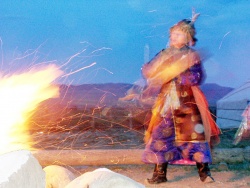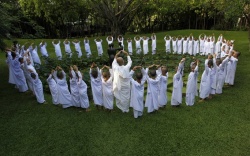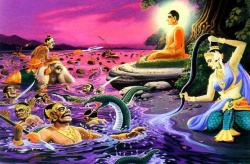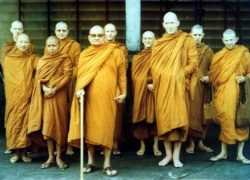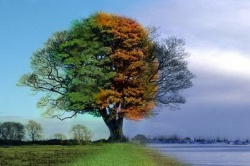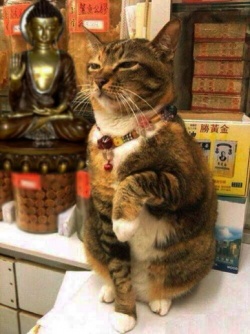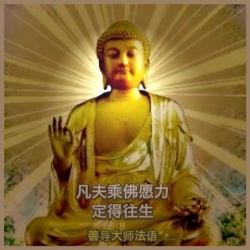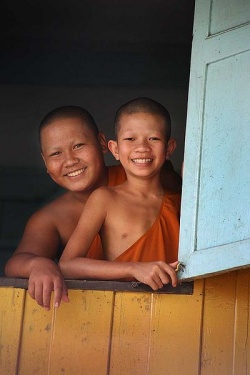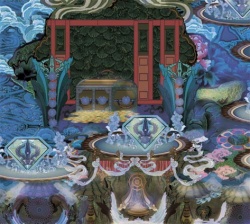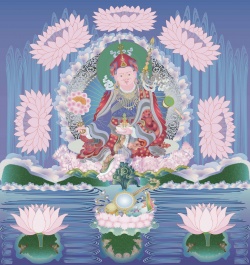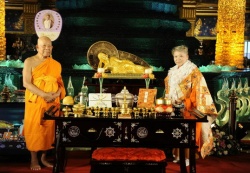Entering Tantrayana
Chöje Lama Phuntsok tells us a little bit about himself and wrote: “In 1988, I was doing my three-year retreat.
When the very Venerable Third Jamgon Kongtrul Rinpoche came to visit the retreat center, he asked me: ‘What would you like to do after the retreat?’ I replied: ‘I have two ideas. One is to establish a Buddhist elementary school, the other is to do a life-time retreat.’
Rinpoche then told me: ‘Generally speaking, it would be better to do a life-time retreat, but during this generation it is actually more important to establish and enable the study of Buddhist texts. So, you should go ahead and build your school.’
That’s how in 1990 I began to organize the elementary school. However, financial hardships kept surging towards me like endless waves. I kept trying and striving for support and finally, in 2001, eleven years had passed by.
“Next, I started to develop higher Buddhist studies. No matter what kind of difficulties I met with mentally or materially, I just kept trying tirelessly to reach my goal.
“I was born in 1951, in a remote valley in the Himalaya region of Nepal. In this realm of snow, I spent my first 16 years like an ignorant being and never received any Buddhist or even conventional education. When the idea of becoming a monk first came up in my mind, my parents were not ready for that, because they only had one son, me, and a daughter, my sister.
It was very difficult to get them to agree to my wish. My mother passed away when I was 16. Then something good happened when I was 17. My father took my sister and me on a pilgrimage trip through Nepal, and the XVIth Karmapa was there! It was such a great fortune! Although my father still didn’t agree to my becoming a monk, I was determined to fulfill my wish and gain control over my own life.
“Becoming a monk doesn’t mean being supported from then on. I had to support myself - there was no one there to help me. Beside the financial hardships, I could only go to the classes as an auditor. At that time I had to help with serving tea or working in the kitchen in order to get the chance to receive an education. When I reached the age of 40, I finally finished my retreat. On this path of practice, as an ordinary monk with a heartfelt wish to benefit all sentient beings, I finally, step-by-step, carved out this path of education for the Karma Lekshey Ling Institute.”
Introduction
I wish to greet you kindly and want to thank you for coming to the teachings that I hope will benefit you.
In Buddhism, it is understood that every living being wants to be happy and nobody likes to be unhappy or suffer. Even though everyone wants to be happy and free from suffering, they are not aware of the causes and conditions to achieve true happiness and freedom from anguish and woe. There are various methods to achieve this goal. But it is necessary to know which causes need to be established in order to be free from birth in lower states of existence and to be born in favorable conditions so that one can lead a meaningful life.
Buddha Shakyamuni appeared in the world in order to show us how to be free from birth in the lower realms that are marked by suffering and how to attain birth in higher realms that are marked by happiness and joy. Since everyone has a different predisposition and varying inclinations, Lord Buddha presented a vast array of Dharma instructions to meet the manifold capabilities and needs of followers who wished to lead a worthy life and mature spiritually.
Lord Buddha turned the Wheel of Dharma three times. He first taught the Hinayana and then the Mahayana so that followers are able to learn to become free from suffering and attain lasting happiness and joy.
When he turned the three Dharmachakras, the “Wheels of Dharma,” he first presented the Sutrayana, then the Mahayana, and then the Tantrayana.
There are three divisions of Sutrayana, translated into Tibetan as [mdo’i-theg-pa]], “the vehicle of Sutra.”
There are Sutras presented for individuals with highest capabilities, for individuals with middling abilities, and for students with lesser abilities.
There are four sections of Tantrayana, translated into Tibetan as rgyüd-kyi-theg-pa, “the vehicle of Tantra.”
There are the Tantras for individuals with less keen awareness, which are the Kriya Tantra and the Charya Tantra; then there are Yoga Tantra and Anuttara Yoga Tantra for individuals able to engage in practices that address deeper awareness.
What do Sutrayana and Tantrayana have in common? A devotee of both vehicles needs to have taken refuge in the Three Jewels - the Buddha, the Dharma, and the Sangha.
A devotee then needs to have given rise to “the awakened mind,” Bodhicitta in Sanskrit, which is the wish to attain enlightenment for oneself and for the benefit of all living beings.
The difference between Sutrayana and Tantrayana becomes clear if one understands the four sections of Tantra. Let me explain them to you.
The Four Sections of Tantra & the Four Types of Practitioners
The four sections of Tantra, rgyüd-sde-bzhi in Tibetan, are:
1) & 2) Kriya and Charya Tantra (the Sanskrit terms that were translated into Tibetan as spyöd-rgyüd and bya-rgyüd respectively) emphasize outer purification of body and speech and of disturbing emotions.
Practitioners learn to become less involved with worldly activities and concentrate on attaining inner tranquillity in order to be able to roughly experience emptiness, which is the purpose of practice.
3) Yoga Tantra (translated into Tibetan as rnäl-‘byor-rgyüd) is the third Tantra. More advanced students who engage in Yoga Tantra practice focusing their attention one-pointedly on emptiness.
4) The fourth Tanta, Anuttara Yoga Tanta (bla-med-rnäl-‘byor-rgyüd) is supreme. Very advanced meditators of Anuttara Yoga focus their attention on merging Bodhicitta and primordial wisdom-awareness until they become indivisibly united in their mind-stream.
Lord Buddha taught the four Tantras because students have varying propensities and abilities. It is not the case that one single practice is applicable for everyone since everyone is different.
Now, people can be classified into four types, also referred to as “four enlightened families,” rigs-bzhi in Tibetan.
1) There are individuals in society who are said to belong to the priestly Brahman caste (bram-ze in Tibetan).
They concentrate their attention on outer practices through ritual cleansing to purify their body and on recitation of mantras to purify their speech, which correspond to practicing the first Tantra, Kriya Yoga.
2) There are other individuals in society who belong to the warrior or royal Ksatryia caste (rgyäl-rigs in Tibetan). They concentrate their attention on spreading the Dharma by speaking about it to others with their speech or by painting Thankas with their hands for others to see, which corresponds to practicing the second Tantra, Charya Tantra.
3) Those individuals who are said to belong to the Vaisya caste (rje’u-rigs) are traditionally seen as merchants or tradesmen. Although lower in status according to the caste system, they are so advanced that they need not engage in many outer rituals anymore and can abide within the nature of the mind without exerting much effort, the reason they belong to the Buddha family. Their practice corresponds to Yoga Tantra.
4) Individuals belonging to the Sudra caste (dmangs-rigs) are those who usually work as servants or laborors. They are those persons who are seen to belong to the lowest category in the traditional caste system, but as practitioners they do not engage in any outer rituals anymore.
They do not practice austerity or carry out cleansing rituals since they have fully turned their minds inwards. Their practice corresponds to Anuttara Yoga Tantra.
Seeing that there are four types of practitioners, the Buddha taught the four Tantras - the Kriya, Charya, Yoga, and Anuttara Yoga Tantras. Where can we start practicing? Lord Buddha offered three stages of teachings to students who wish to begin practicing.
Three Stages of Practice
A student of Buddhadharma first needs to receive instructions from a qualified teacher in order to learn the correct view. It is necessary to receive the teachings on karma and interdependent origination, for example.
During the second stage a follower contemplates the instructions thoroughly in order to be able to practice the third stage of meditating the instructions correctly.
1) The View
There are two types of proponents of tenets (grub-mtha’-smra-ba-gnyis), Buddhist and non-Buddhist, for example, Hinduism. In Buddhism, the correct view is classified according to four philosophical schools (grub-mtha '-smra-ba-bzhi) that formulate the Buddha’s doctrine in sequence while remaining related with each other.
The four Buddhist schools are Vaibashika, Sautrantika, Chittamatra, and Madhyamaka (bye-brag-smra-ba, mdo-sde-pa, sems-tsam-pa, dbu-ma-pa in Tibetan).
Whichever school a devotee respects and follows, everyone has the possibility to gain certainty in that specific philosophical school of thought and understand its uncontroversial and indisputable tenets.
The initial view of all four schools is based upon Sutrayana. The Vaibashika view is an introductory presentation of emptiness that is studied more deeply in every following school.
Adherents of Sautrantika take their studies a step further than Vaibashikas, but both are Hinayana adherents. Followers of Chittamatra and Madhayamaka refine the view even more; both are Mahayana practitioners.
The process of refining the view more and more subtly eventually leads to Vajrayana, a term synonymous with Tantrayana and Mantrayana, in which case accomplished practitioners realize the view completely.
It is utterly important to study and learn the view of each Buddhist school in the order in which they are presented, because it is rather hard - if not impossible - for anyone to begin at the end.
One needs to learn und understand the fundamental teachings well in order to progress in stages and reliably. Having done so, it is possible to practice Tantrayana.
2) Meditation
The Tibetan term for “meditation” is sgom-pa; a meditator is a sgom-pa-po.
The Tibetan term sgom-pa means “growing accustomed to the teachings imparted by Lord Buddha” through learning, contemplating, and meditating the four schools of Buddhism in stages and step-by-step.
By becoming more and more accustomed to the teachings on emptiness that are presented in each school and deepening one’s view until it becomes a personal experience, one is able to integrate the view in one’s life, which is connotation of the term sgom-pa.
Practitioners of Kriya Tantra, the first Tantra, become accustomed to outer representations of the Buddha, like those depicted in Thankas and as sacred statues.
Practitioners of Charya Tantra, the second, furthermore become used to merging with the meditation deity that they visualize during formal practice and learn to see themselves as that deity.
Practitioners of Yoga Tantra become accustomed to realizing the essence of a meditation deity.
Anuttara Yoga practitioners become even more accustomed to realizing the essence and to not dividing the deity they visualize during the meditation session into an outer apprehension and an inner apprehending mind after formal practice.
They focus their mind on qualities that the specific meditation deity represents and symbolizes, thus developing and establishing values in their lives. It is necessary to progress through stages, step-by-step, in order to realize and manifest qualities in all walks of life that are, as it is, always and already present in one’s own mind.
Looking at the third Tantra, a practitioner of Yoga Tantra comes to see that a meditation deity does not reside as a separate entity inside or outside what is usually thought to be the own self.
Rather, a practitioner of Yoga Tantra realizes the essence of a meditation deity, which is the nonduality – gnyis-su-med-pa - of an apprehender and an apprehension, usually experienced as “self” in opposition to “world.”
In response to a question that was placed by a participant, the biggest difference between Yoga Tantra and Anuttara Yoga Tantra is the empowerment a disciple receives, the ritual a disciple engages in during practice, and the way a student practices.
I have discussed the first two points of the three stages of practice, the view, and becoming accustomed to the view through meditation, and now want to speak about the third point, which is the actual practice.
3) The Actual Practice
How do Vajrayana followers practice Kriya Yoga Tantra? They engage in outer practices by cleansing their body and speech through ritual washings and recitation of mantras.
How do they practice Charya Tantra? They engage in practices to purify body, speech, and mind; therefore Charya Tantra is not only what is referred to as an outer Tantra, because the mind is slowly purified too.
How do followers practice Yoga Tantra? They engage in less outer purification practices of body and speech and focus their attention on the own mind and on realizing emptiness more thoroughly.
How do followers practice the highest Tantra, Anuttara Yoga? They exclusively focus their mind on realizing primordial wisdom that every living being always and already has.
In order to become free of suffering and attain lasting happiness and peace, all three stages of practice need to be completed and perfected. Students need to learn the teachings, become accustomed to the teachings by contemplating them deeply, and integrate them through meditation practice in order to flawlessly manifest qualities of being. Having done so, a Vajrayana practitioner never separates from a meditation deity but experiences and manifests the indivisibility of the outer and inner deity.
Even though practitioners focus their minds upon deities who symbolize qualities of being during meditation, every stage of Tantra entails more and more subtle practices that enable students to realize the undivided state, and no Tantra is the same, i.e., the practices seem to be the same but aren’t. Seen ultimately, though, there are no divisions.
There are many methods of practice so that a follower can realize ultimate reality. There are many methods to attain enlightenment; one can practice Sutrayana according to one’s abilities or one can practice Tantrayana in reliance upon the four Tantras.
Even though a specific practice is fitting for one person, this does not mean it is fitting for everyone. An adept needs to choose the practice that helps him and her progress and mature the most – then he and she will attain the ultimate result, which is enlightenment.
There are many non-Buddhist practices that benefit living beings. There are also big differences in Buddhist practices. Some individuals have a stronger inclination to concentrate on the Sutras and should do so.
Others have more confidence in Tantra and should do so. Whether one practices Sutra or Tantra, it is important to bring one’s motivation and wishes to fruition. Failing to accomplish one’s aims, no practice can be considered helpful or beneficial.
Even though there are many Hinayana Buddhists in Thailand, Burma, and Ceylon and many Mahayana Buddhists in Tibet and the Himalayan Kingdoms, they differ immensely.
The highest Tantra in Tantrayana is practiced in Tibet, and Buddhists there, too, are divided into different schools – the Kagyüpa, the Nyingmapa, the Sakyapa, and the Gelugpa.
Followers of these four schools all engage in Anuttara Yoga Tantra but differ in that the Kagyüpas and Nyingmapas concentrate more intensively on the highest Tantra than the other two.
Marpa Lotsawa, the Great Translator, travelled to India several times, received instructions from his famous teacher Naropa, and brought Anuttara Yoga Tantra to Tibet. In the Kagyüpa Tradition, he is revered as the great teacher of highest Tantra in Tibet.
Marpa Lotsawa passed the teachings on to his most eminent pupil, Jetsün Milarepa, who practiced in solitude, achieved highest realizations, and therefore became renowned as the Great Mahasiddha Milarepa.
Jetsün Milarepa passed the highest teachings on to his foremost pupil, Lhaje Gampopa, who became the foremost teacher of Tantrayana in Tibet.
Dipamkara Atisha was the leading teacher of Sutrayana in Tibet.
Lhaje Gampopa brought the instructions of Sutrayana and Tantrayana together and unified them into what has become known as Mahamudra; he passed the Mahamudra instructions on to his most worthy disciple, Düsum Khyenpa, who became the First Gyalwa Karmapa. Ever since then, the Karma Kagyü Lineage emphasizes the practices of both Sutrayana and Tantrayana and is flourishing worldwide.
Thank you very much.
May the life of the Glorious Lama remain steadfast and firm.
May peace and happiness fully arise for beings (as vast in number) as space is limitless.
Having accumulated merit and purified negativities,
May I and all living beings without exception
swiftly establish the levels and grounds of Buddhahood.
Presented at the Kamalashila Institute in Germany, 2005. Translated into German by Anneke Bouwman, into English and edited by Gaby Hollmann. Photo of Chöje Lama courtesy of Anneke with sincere gratitude for her kind help.
